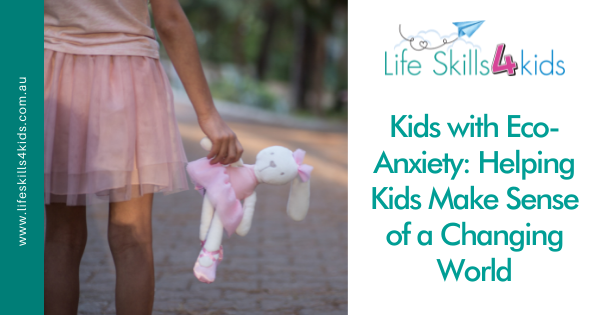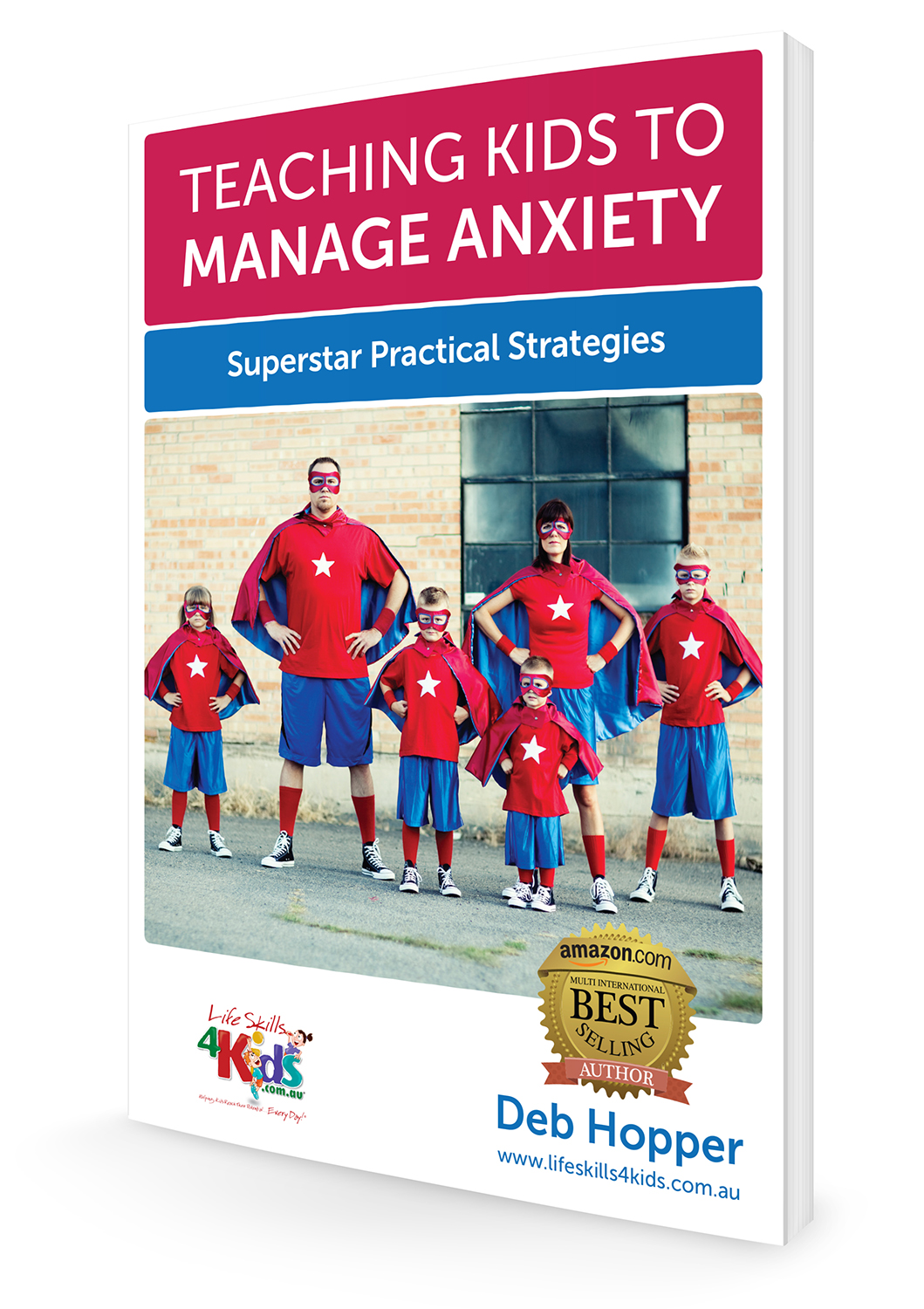Kids with eco-anxiety are a natural by-product of the many natural disasters and catastrophes that we have seen in the recent past. Children can see that we live in a changing world, and it is scary for them to think about what the earth might look like in the future.
As parents, carers and educators, what can we do to help children overcome their anxiety while making a positive contribution for the future?
Talk it over honestly
Acknowledging that we live in a changing world gives kids the opportunity to express their thoughts and fears about the future. During these conversations, it’s important to redirect strong negative emotions into positive thoughts and actions, including any strong feelings we might have about the topic.
When trying to help children and teens manage anxiety for the future, it’s helpful to focus on things we can do or things other people have accomplished to help the earth instead of what might go wrong.
Try to focus on solutions rather than blame
It’s easy to get caught up in the blame game and natural to want to find a “baddie” to fight. There are plenty of potential “baddies” to focus on, but it’s healthier to focus on solutions and actions as blame rarely solves problems.
An anxious child will feel better by contributing to solutions rather than experiencing the negative emotions that blame often causes.
Treat opposite views respectfully and try to work together
It’s important to discuss what you might do if you meet someone who has an opposing viewpoint to you. How do you treat that person?
Respect is a positive action underpinned by a powerful positive emotion. Even when people disagree, they can still treat each other with respect. Kids with eco-anxiety will benefit from listening to others’ points of view, learning how to respectfully state their own point of view, and finding ways to work together.
Spend time in nature
Spending time in nature is a wonderful anxiety antidote. Spend as much time as you can outdoors in the fresh air and sunshine and help your kids to see that it is still a beautiful world even as we work to protect it.
Don’t forget, nature is resilient, and it can heal and recover when given the right conditions. Kids need to see the things that are right with nature as well as the problems. Focusing on the positives helps them to manage anxiety.
Create a picture board of things you can do to help
Getting creative can help a child feel that they are taking action in a positive way. Create a picture board or scrapbook of ways you can do your part to help the earth. Include easy activities such as cutting down on plastic waste, recycling and reusing household goods as much as possible, planting trees or plants, growing your own food, and talking to friends about what they can do to help.
You can set dates for specific activities, so if a child starts to feel anxious or overwhelmed, they can go to the board and look at what they can do to help and when that will happen.
Limit news exposure
Much of what we hear on the news is negative, and this can feed into the anxiety cycle of kids with eco-anxiety. As we’ve witnessed drought, floods, fires, more floods, and other environmental problems, it has a cumulative effect on mental health for everyone, not just children with anxiety.
One of the ways to combat this is to limit exposure to the news and other media that has a negative message. It’s good to be informed, but too much exposure can simply lead to fear and anxiety.
Focus instead on the actions you can take to do your part and refuse to allow fear and negative stories to take over.
Have fun together
Who said saving the earth had to be boring? Some fun ways of engaging in environmental activities could include watching a nature documentary, working on a citizen science project (the CSIRO has lots of interesting citizen science projects you can get involved in), creating your own nature documentary, reading stories about nature together, or working on a nature puzzle.
You can also seek out environmentally sustainable suppliers of food and goods, such as farmers’ markets, organic nurseries, and local manufacturers. It’s a fulfilling activity to know that you’ve supported a sustainable local business rather than a large company.
Volunteer
Volunteering is a wonderful way to feel good about yourself and the contributions you are making to the world. There are plenty of earth-friendly organisations that welcome volunteers, and kids benefit by undertaking activities that help to take their minds off their worries for a while. Allowing children to experience the joy of giving without expecting anything in return is one of the most important contributions parents and carers can make towards positive feelings and good mental health.
Kids with eco-anxiety can see the positives with the right help
When adults intentionally redirect kids’ emotions and energy into positive thoughts and activities, it helps with the feelings of fear and worries over the future. When kids feel that they are making a difference in the world, it’s a good feeling. And they aren’t the only ones. Adults can benefit too.
For more updates, follow us on our social media channels. We are on Facebook, Twitter, Linkedin, and Instagram!
Get your own copy!
Kids today are growing up in a fast-paced world where information and opportunity overload can be overwhelming.
Based on many years of clinical experience as an Occupational Therapist, Deb Hopper has been using her Just Right Kids® Model to teach children to communicate and manage their stress and anxiety by:
- Identifying their “body speed”,
- Understanding their stress triggers, and
- Implementing simple strategies to reduce anxiety and stress.


